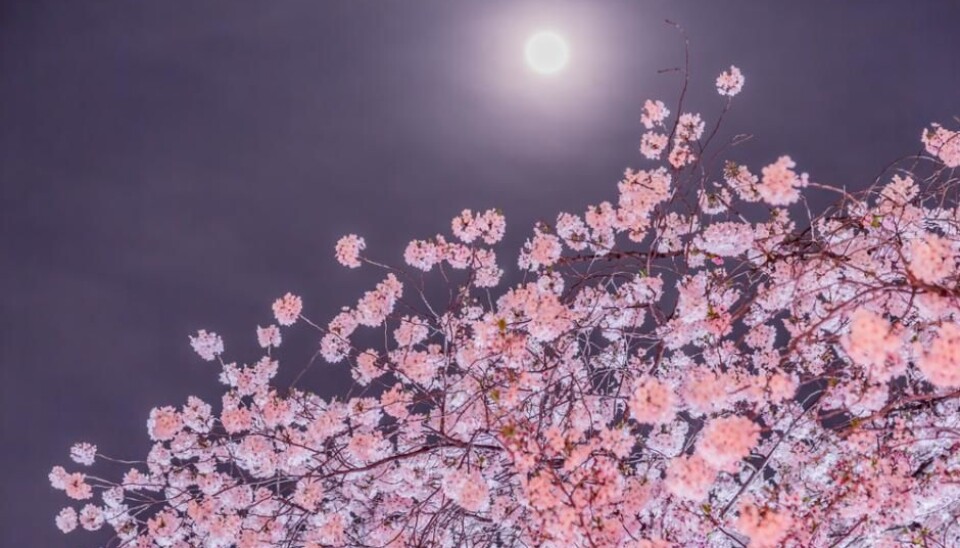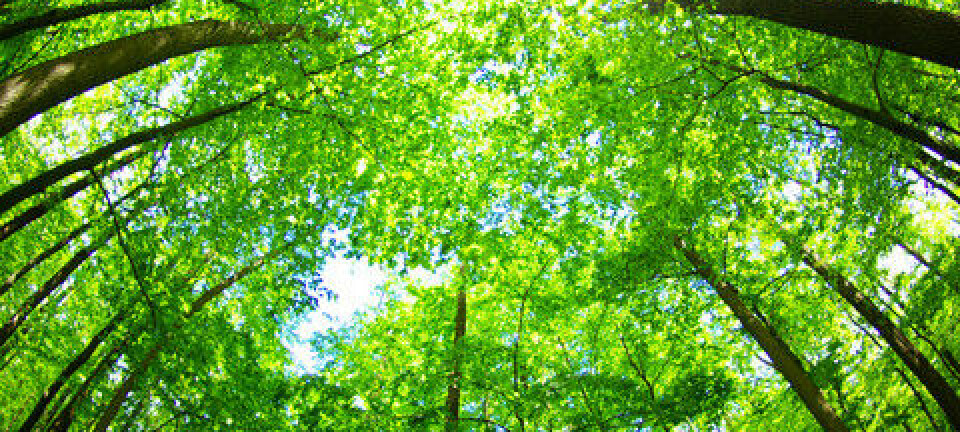
Why do trees sleep badly?
Scientists from Denmark and Hungary have studied the circadian rhythms of trees and discovered that many of them are poor sleepers. But why is this so?
You may think that trees and other plants are stationary and passive organisms that just stand around all day. So long as they get sufficient sun and water, everything is fine.
But the reality is far more complex.
We have known for a long time that plants act differently at night than during the day. Last year, Jeffrey C. Hall, Michael Rosbash, and Michael W. Young, won the Nobel Prize in physiology for their work on the molecular mechanisms that control circadian rhythms of animals and plants.
Our new research adds further nuance to this picture. It shows that we need to monitor sleep patterns of plants, for example in fruit plantations.
Plants also need sleep

Among complex animals such as humans, sleep is an important part of the daily rhythm and serves to maintain body functions. During our sleep, the senses switch off and all muscle groups relax.
Even though plants do not possess a nervous system or muscles, they too become dormant when the sun sets and photosynthesis shuts down. Just like us, their metabolism will change.
Until now, scientists assumed that plants generally follow a 24-hour daily rhythm. But our research shows that this assumption does not always apply. This is good to know if you want to reduce plant stress.
Read More: We have bred "selfish" plants for thousands of years
What happens when plants nap?
During the day, plant metabolism changes continuously, depending on the intensity of the sunlight.
However, during the night, the plant redistributes starches and sugars to optimize the conditions for photosynthesis and biomass production the following day. The plant is preparing itself for the next day in much the same way that we are rested and productive after a good night’s sleep.
This means that the cells’ turgor pressure changes during the course of the night and returns to the same starting point every morning, unless the plant is exposed to stress or disease.
Twenty trees in a Hungarian greenhouse
This was the conventional understanding until we studied the nocturnal movements of trees in collaboration with researchers in Hungary.
We used 3D-laser scanning to measure small movements in the canopy of trees housed in greenhouses.
Previous studies have conducted such measurements on Birch trees, but we decided to study 20 different species under fully controlled conditions. The trees represented different evolutionary lineages of flowering plants.
The measurements were conducted with a pulse radar, which collects large amounts of high precision distance measurements in a short period of time. The data are displayed as a 3D-point cloud (see image above).
By repeating the measurements every 30 minutes, you gain insight into changes in the position of branches and leaves over time. The data revealed differences in how the canopy of various tree species moves during the night.
Read More: Arctic plants may be tougher than you think
Many trees have restless sleep
In some species the canopy moved up, while in others it lowered a little. Among individual trees, such as the olive tree and viburnum, the lower part of the canopy moved downwards, whereas the upper part of the canopy moved upwards.
The canopy of some trees only moved slightly more than the five millimetres we set as a threshhold to filter out the noise in the data. Others canopies moved as much as two centimetres.
But most surprisingly of all was that many trees move in cycles far shorter than the 12 hours—you could say that they had a ’restless’ sleep.
In Magnolias we observed the most distinct pattern with three cycles each lasting approximately four hours.
Why do trees do this?
The discovery of sleep rhythms in trees is new to science and right now, we can only guess as to the underlying causes.
However, we know that the movements must be related to fluctuations in the turgor pressure of the plant tissue. The differences detected between the tree species that we studied are not surprising, since their anatomical structures and rigidity differ.
We can only speculate what causes these nocturnal cycles in turgor pressure, when photosynthesis clearly plays a minor role. We suggest some kind of coordinated, tissue-specific changes in turgor pressure, which may constitute part of a pumping mechanism.
However, more studies are needed to unravel how these mechanisms work.
Studying tree movements in this way could become a cost effective way to monitor tree health. For example, in an orchard you would be able to see when a tree is suffering from lack of water or disease even before it is visible to the human eye and before it is too late to do something about it.
In other words, it’s important to get a good night’s sleep. Even for trees.
---------------
Read this article in Danish at ForskerZonen, part of Videnskab.dk
Translated by: Catherine Jex
Scientific links
- 'Not All Trees Sleep the Same—High Temporal Resolution Terrestrial Laser Scanning Shows Differences in Nocturnal Plant Movement', Frontiers in Plant Science (2017), doi: 10.3389/fpls.2017.01814
- 'Short interval overnight laser scanning suggest sub-circadian periodicity of tree turgor', Journal of Plant Signalling and Behaviour (2018), doi: 10.1080/15592324.2018.1439655










